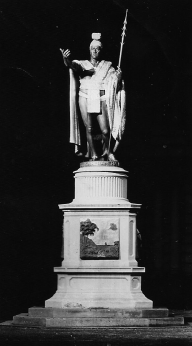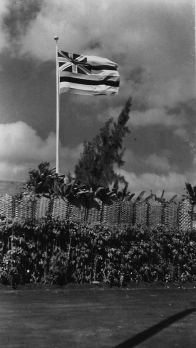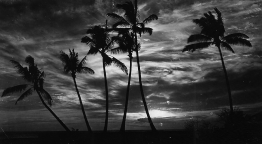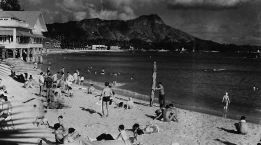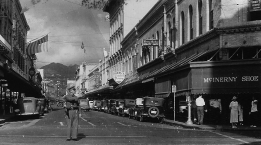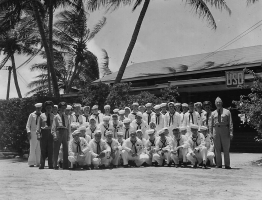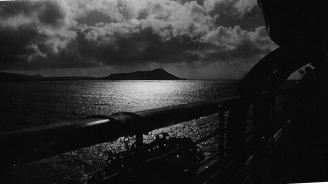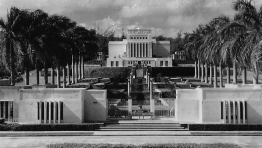Honolulu, Hawaii
Travels and Sightseeing
Photographs taken by US Navy sailors in WW2
By Stephen Sherman, April, 2010. Updated March 21, 2012.
Honolulu was the main U.S. naval base in the Pacific during WW2, and a welcome port-of-call for the sailors, who were delighted to tour its monuments, beaches, and landmarks on sightseeing trips. My father, Milton W. Sherman, on board the USS Denebola, visited Honolulu, Oahu in 1945. His captions and comments in italics.
Since we were in Hawaii for a short time we felt we were lucky to have even one all day liberty. It is surprising how much sightseeing can be done in so short a time. During the tour of the island we stopped to visit the very formally landscaped grounds of the Mormon Temple. It is a point of interest and worth seeing, but I don't remember much about the place. I have some snapshots that we purchased there and I guess if it were not for those it would have been forgotten.
The memory is a funny thing: Mine proved quite effective with something much more prosaic than the Mormon place, and that was two types of fruit that are grown in Hawaii but not on mainland United Sates: Papayas and Mangos. They are much more delicious there than around here because they are tree ripened in Hawaii. Of course both fruits can be purchased around here (Connecticut) now, but at that time neither was available here.
For my taste, the Papayas are better. They are more melon-like and Mangos are more citrus-like. When we tried eating the Papayas while standing up they were so juicy and slipery that the juice ran down our hands and arms and so proved to be quite a challenge. But they were tasty, having what seemed to me a trace of pine flavor, or I guess what pine smells like. They do not resemble any other fruit that we know of.
The Mangos had a tough green skin that had to be peeled something like an Orange. But they had a property that is absent in an orange, and that is a stringy pulp that appeared to be attached to the skin making them nearly impossible to peel. Most of us agreed that Papayas were worth the trouble and Mangos were not.
Sources:
Memoirs and photographs of Milton W. Sherman (1919-2010). He served in the U.S. Navy during WW2, on board the USS Denebola, AD-12, when he was in mid-twenties. On board the Denebola, he sailed to Hawaii in late 1944, where he bought these vintage postcards from street vendors and the photos from the ship's photographer. You might enjoy reading a fuller version of his travels in the Denebola.

